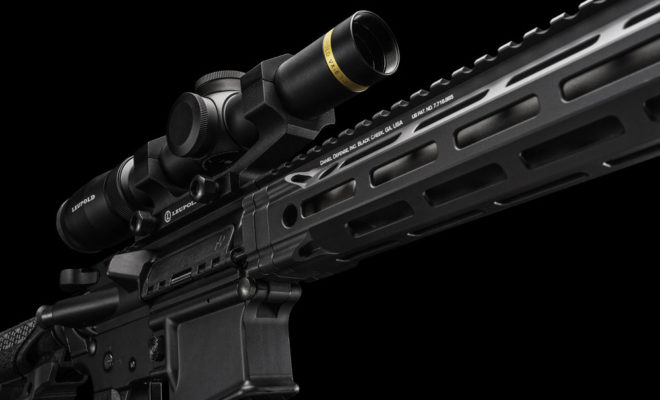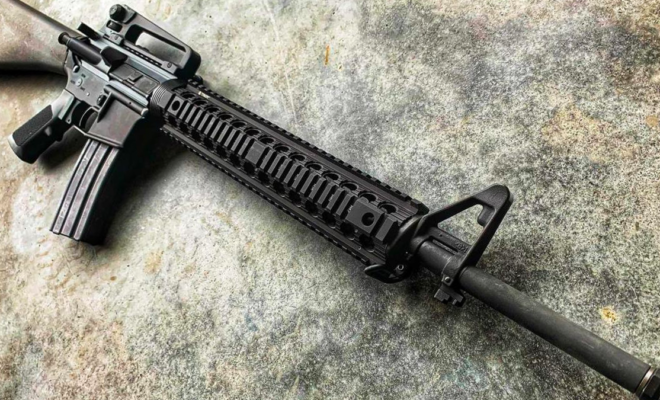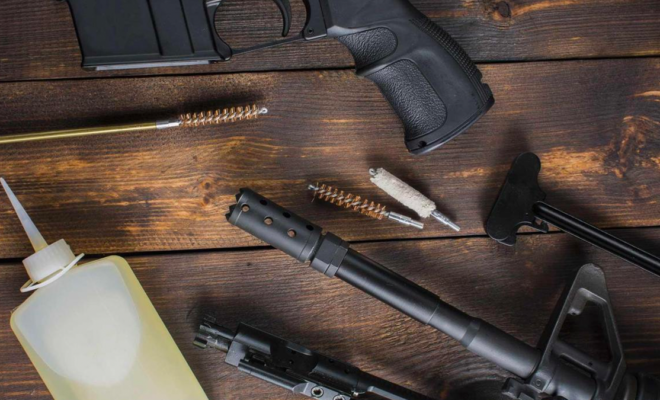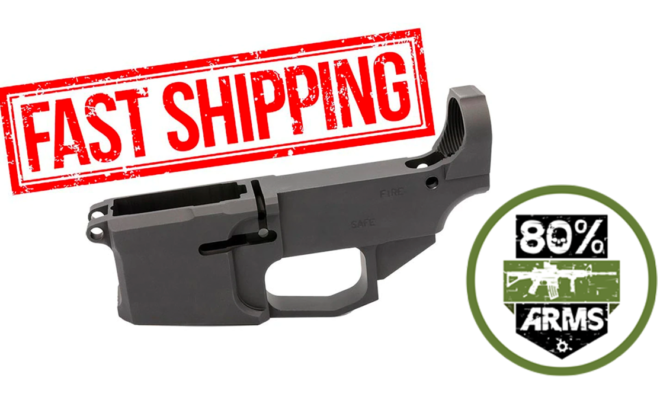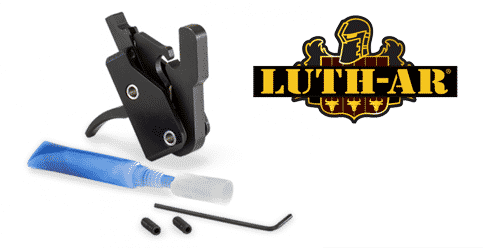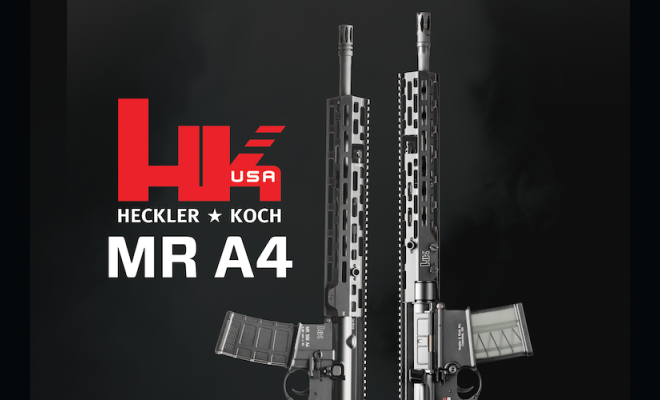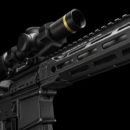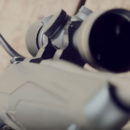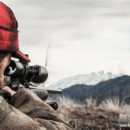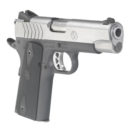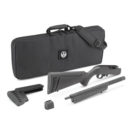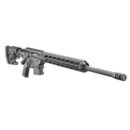Why did HK start making the M-16 and AR15 type rifles?

by Larry Vickers
Vickers Tactical, retired US Army 1st SFOD- Delta combat veteran
republished from a 2014 article
The project started in the year 2001 when I was the weapons R&D NCO at my former unit. Jim Schatz was visiting on an unrelated matter when the topic came up of improving the military M4 carbine. I was well aware of HK’s success in fixing the problems of the British SA 80 and was very interested in what HK had in mind in terms of an upgrade to the M4 carbine. I have very extensive experience with the M4 even by Spec Ops standards both in using the M4 and training others to use it. I knew that the M4 as issued was having problems in SOCOM wide use, much of which is because the carbine was being used way outside it’s design parameters. If you keep the M4 lubricated, use only milspec ball ammo (M855 & M193), use magazines in good condition, and fire it on semi auto it works very well. But as soon as you try to push it outside those limits such as extreme firing conditions and extensive full auto fire, as well as running it with little or no lube you will have problems. In addition trying to issue versions with shorter than 14.5 inch barrels and suppressed fire are also big problem areas with the as issued M4. The design is a carbine modification of the 20 inch barreled AR 15/M 16 weapon system. The M4 is pushing that design as far as it can go and still have an acceptable degree of service life and reliability. Any requirements beyond that design envelope will require a redesign or a new weapon.
My former Unit had been searching for an M4 style carbine that was smaller and more maneuverable in confined spaces. This has been an ongoing effort to some degree ever since we had gone from MP5‘s to M4‘s. A lot of money had been spent on testing every short barreled AR style weapon we could find. At the end of the day we came to the conclusion that none of them answered our needs.
They may be fine for casual use but they were not suitable for the demands we place on a weapon of that type. In all honesty, none of them was even close. At that time we began our search to other non-AR style weapons such as the G36C and the SIG SG552. Shortly after these other efforts began we became aware of the HK offer of a product improvement program for the M4 carbine. HK had offered this to other key organizations in the US Military small arms community with no takers. HK was looking for loaner US Government property M4 carbines to analyze and begin an improvement process on, much like the SA80 program had preceded. The program would be of no cost to the Government with the understanding at the end of the program the Government had no obligation to purchase any product HK brought to the market. Bottom-line if we did not like what they produced we could just walk away. To me this was a no-brainer. I presented the proposal to the Unit chain of command and after a legal review it was decided to provide HK with the carbines they needed to begin the program. It was also understood that the Unit could pull out of the program at any time. As far as the Unit was concerned there was no downside to this arrangement. It is somewhat surprising why no other organization before the Unit took HK up on their very generous offer; however if you know the inner workings of the military small arms establishment and industry it is par for the course.
The modifications began with high speed video of the M4 carbines functioning. After carefully analyzing the firing cycle of the weapon a series of modifications were put into motion to address the various issues of the weapon. A key component was already done in the magazine that was taken from the SA80 program. (A little known fact is Ken Hackathorn and I brought the first SA80 magazines into the US in the year 2000 after a visit to HK Oberndorf (HKO) regarding the ill-fated HK 1911 program. I then placed an order for 200 magazines for test and evaluation at my Unit. That started a sequence of events that eventually led to the adoption of the HK M16/SA80 magazine for all of SOCOM.)
The main effort from the start was to adapt the unique HK gas tappet system used in the G36 to the M4 carbine. This was the crux of the effort from the very beginning. The engineers at HKO had the highest regard for several design features of the AR 15/M 16/M4 weapons system and they vowed from the start to retain as many of the good features the weapon already had and only address the characteristics that required attention.
Frankly, the M16 magazine design has inherent design flaws and a much better magazine could be utilized. The one major drawback to that is that it would make the magazine non-interchangeable with other M16 style weapons and magazines on the market. Unfortunately that took a different magazine off the table for this project. That left the gas system as the main effort.
The HKO engineers held the belief, as do I and many other knowledgeable firearms industry people, that the gas direct system of the AR family is less than optimum in many ways for a military service weapon. Frankly, the weapon has been as success in spite of this fact, not because of it. It was felt that the G36 gas system would be a perfect fit if it could be made to work within the M4 envelope. It answers the mail across the board as a gas operating system goes and in hindsight it is the gas system the AR should have had from the start. Essentially a product improved AR 180 /G 43/SVT 40 style gas tappet systems; it offers key proprietary features that no other gas tappet system has. In my opinion it is the best gas system currently on the market for a shoulder fired non-sustained fire weapon. HKO is justifiably proud of this and uses it whenever feasible. It is used in the G36, XM8, HK416 and HK 417 rifles with it being one of the key attributes of those weapons.
At first simple modifications were performed using many of the original M4 components such as bolt and extractor. One thing that became apparent immediately was the extended service life of both of these critical components. That is when we discovered the hidden killer in the AR style gas direct system: heat. Heat from the gases funneled into the bolt carrier not only dry out lubricant and deposit carbon fouling, as anyone who has any time behind an AR style weapon knows, but also dramatically shortens service life of key components in the operating mechanism.
With the HK G36 style gas system, the operating parts stay dramatically cooler and thus prolong service life immeasurably. For instance, I have no idea how long an HK416 bolt and/or extractor will last because I have yet to see one break. I have seen HK416 style weapons with over 26,000 rounds fired through them with no parts breakages of any kind and plenty of serviceable barrel life. As I have demonstrated many times, the lack of heat transfer through the pusher rod of the gas tappet system and into the operating group is so dramatic that you can easily touch the pusher rod return spring and handle the bolt carrier in your bare hands after several magazines of full auto fire. The distinct advantages of this gas system over the original gas direct system are very impressive and have to be seen to be fully appreciated.
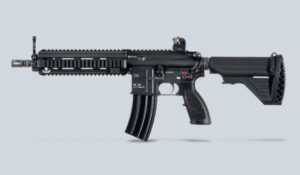
Product shot of HK416
After the gas system was finalized and HK was fabricating all the key internal bolt carrier components, engineers at HKO turned their attention to the removable free float rail system. The Unit had a requirement that the rail system would allow access to the gas system for maintenance and return to zero for any rail mounted devices such as IR lasers. This was a very tall order to say the least. Frankly, I had serious doubts it could be done. What HKO brought to the table next is what really proved to the Unit and everyone involved that they truly are in a league of their own when it comes to engineering expertise.
The resulting HK416 is a simple yet truly ingenious design that does exactly what it was asked to do. It has several proprietary features and is an example of superb engineering and manufacturing excellence on many levels. That was all the Unit needed to see and after a very successful 15,000 rd endurance test of one of the first production HK416 10 inch carbines, they placed the first order for several hundred HK416 complete 10 inch barreled weapons. Those particular carbines have been in continuous combat since when they left the factory in Oberndorf as this is written in June of 2006. No assault rifle in modern history has gone from development, testing, production, and sustained combat operations more quickly than the HK416. The Unit commander who was in place when the weapons were delivered said it was the most successful program the Unit had ever undertaken with a vendor. Needless to say I am very proud of the fact that I started the project back in 2001 and it has been a success; so much so that a follow on project with the HK417 is well on its way to being a sequel to the HK416 story.
After fielding the HK416 only a few things were found to be in need of attention. One was that the heavy profile barrel under the handguards makes the weapon very heavy when accessories are attached. This was a by-product of the original M4 feedback and the projected high rate of fire the HK416 would have to endure within certain sectors of SOCOM that did a lot of full-auto fire. A lighter barrel profile that reduces the weight of the barrel by 7 ounces is available to answer that concern. Also some users were seeing slam fires when using non mil spec 5.56 mm/.223 ammo such as certain types of frangible. This is due to the higher closing energy of the bolt carrier due in part to the lack of gas rings and the heavier buffer and stronger spring. To address this, HKO designed a firing pin safety similar to the one used in the HK UMP 45 ACP SMG. This type safety is also being used in the HK417. In addition enhanced surface finishes are being researched as well as the ongoing refinement that occurs with all HK weapons.
In my estimation, the HK416 has 1/10th the carbon fouling in the receiver and bolt/bolt carrier as compared to a gas direct AR style weapon. This is equivalent to firing 1000 rounds through an HK416 being roughly the same as shooting 100 rounds through a conventional AR 15/M16/M4 platform. If a sound suppressor is used, this ratio increases to approx1/4th the amount of carbon foulingas a gas direct weapon.
As this is being written (2014) I have learned that all the US Military’s top special operations units in JSOC will be fielding the HK416 as their primary carbine. All the key Units in JSOC chose the HK416 in preference to the current M4 and the FN SCAR Light which is still in development for the rest of SOCOM. It is very satisfying to me that units that could field any carbine they want choose the HK416. This tells me we have done our job, and have done it well.
For the record, I have been one of the most vocal individuals inside HK pushing to have a civilian HK416 released to the gun buying public. Unfortunately, the decision is way above my pay grade. At this writing I have no idea if it will ever be available for the civilian market. I can promise you that I will keep pushing for it as long as I am associated with HK. Cross your fingers.



